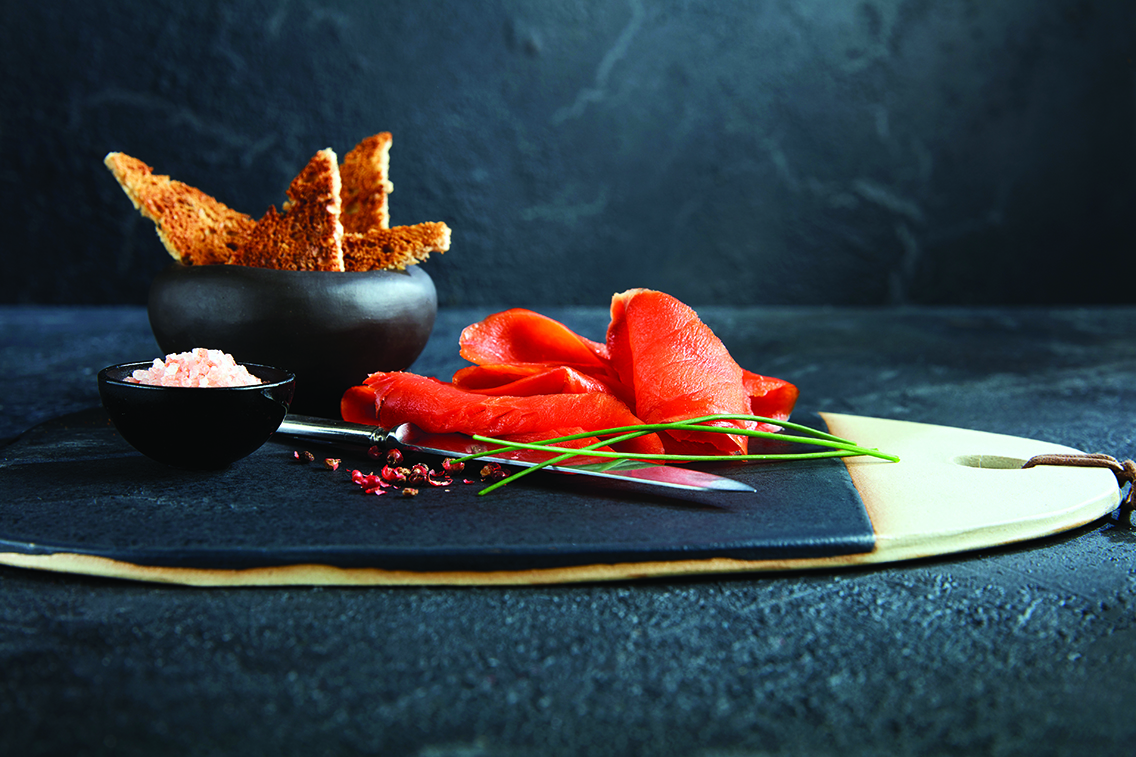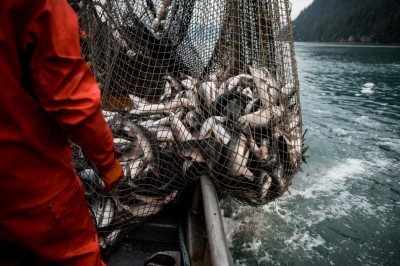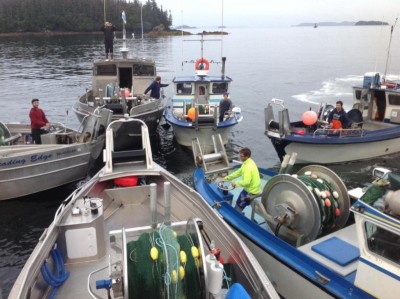Every year, the Alaska Seafood Marketing Institute invites international seafood buyers, chefs and journalists to our state. Alaska, our well-managed fisheries, scenery, warm fishermen, and world-class menus tell the stories that help us market our seafood in the United States and more than 40 countries abroad.
However, in the spring of 2020, for the safety of our fishing communities and the participants, ASMI canceled all in-bound missions. I miss the excitement and, of course, the cuisine, but as I reflect on the ways different groups around the world enjoy Alaska seafood, it brings our regions close again and reminds me of how food connects us all.
In our most valuable export market, Japan, consumers enjoy many premium Alaska roe products, including Alaska herring roe on kelp and the gift item, marinated herring roe skeins, called kazunoko. Alaska pollock roe is commonly sold as tarako — plain, salted skeins — or mentaiko, the more brightly colored salted and marinated skeins. Japanese consumers also appreciate our salmon roe, both as ikura, generally made with pink or keta roe, and sujiko, marinated sockeye roe still in the skein. A bowl of rice often accompanies these items, or the texture of the tiny eggs in mentaiko works well as a sauce on noodles. Mentaiko can also be found at the convenience store in rice balls and as a popular flavoring for a wide variety of snacks!
Mentaiko originated in Korea and remains popular there today. Korea is also a valuable market for Alaska pollock and for specialty products like skate wings or cod heads for soups and braised dishes. These niche products add value to the catch and help us achieve our full utilization goals.
Alaska salmon roe, with its pleasing pop and rich orange color, is also found throughout Europe as caviar. In Eastern Europe people eat red caviar on blinis or bread. Geopolitical forces play strongly in this market. The Russian market is currently closed to Alaska seafood exports; however, Ukraine closed their borders to Russian products, creating an opportunity in Ukraine for Alaska caviar. Additionally, ASMI promotes salmon caviar in Spain, France and Germany.
Europe hosts many traditional markets for Alaska seafood, such as a long-standing Alaska cod market in Portugal, which has also influenced the strong consumption of Alaska cod in Brazil. The UK is the largest export market for canned salmon, and refreshed Alaska sockeye is sold at more than 80 percent of retail outlets. Recent ASMI UK campaigns highlighted sockeye for the BBQ and canned salmon in healthy recipes like salads.
ASMI creates new recipe ideas for traditional products and promotes innovation. In Europe we’ve seen new Alaska whitefish products, such as “sea dogs” from Alaska yellowfin sole or similar pollock preparations. These items are indicative of two ongoing trends: First, more consumers are turning to flexitarian or pescatarian eating as they avoid red meat. Second, consumers gravitate toward convenient products that blur the line between foodservice and retail options, ready to eat, or served through an alternative vendor like a food truck or food court. Trends like these have accelerated during the pandemic, as consumers seek healthy foods and convenient prepared items.
Although fresh farmed Atlantic salmon is readily available throughout Europe, many smokers seek wild products. I once visited a smoker in Germany who collected the trimmings from their sockeye fillets for a French baby food brand. Among all the products I see, I have a special place in my heart for the Alaska seafood items offered to children. With three small children of my own, I pay close attention to nutrition information and know how Alaska seafood benefits developing minds and bodies. Recently we were excited to work with a company in Thailand that created an Alaska salmon baby food; and in China, a company packages mini portions of Alaska sablefish and salmon for children.
Although we remain isolated from our international colleagues and friends, in many ways the world has grown nearer. Consumers around the world report they are cooking new foods for the first time, with many of them now also teaching their children to cook. For those who chose Alaska seafood for the first time, welcome to Alaska!
Hannah Lindoff is the senior director of Global Marketing and Strategy for the Alaska Seafood Marketing Institute.







